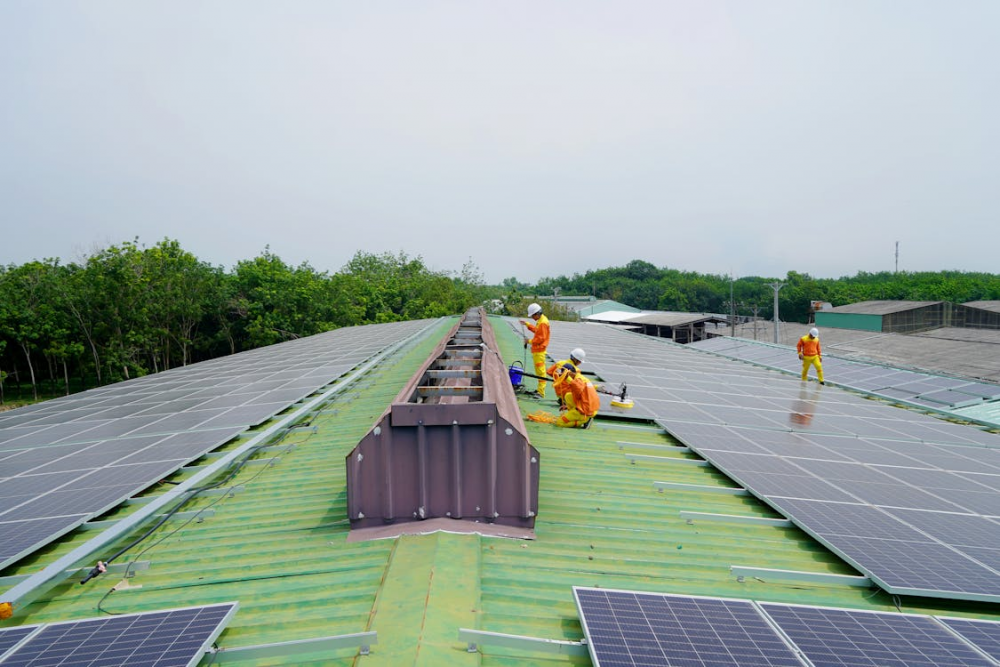
Environmental laws and regulations are the legal framework that safeguards our environment, ensures responsible resource management, and holds individuals and industries accountable for their impact on the planet. In this chapter, we will embark on a comprehensive exploration of the historical development of environmental legislation, examine major environmental laws and acts in various countries, delve into international environmental agreements that foster global cooperation, an
Read more4.3.1 Introduction to Remote Sensing Remote sensing is a critical tool in environmental science, providing valuable insights into Earth's surface and atmosphere from a distance, typically using sensors on aircraft or satellites. These sensors detect and measure the physical properties of objects or phenomena by recording reflected or emitted radiation. In environmental science, remote sensing finds diverse applications, such as land use and land cover mapping, vegetation monitoring, water resou
Read more4.2.1 Data Collection Protocols Data collection protocols are systematic procedures used to gather, record, and manage data in environmental monitoring and research. These protocols ensure that data is collected consistently and accurately, allowing for reliable analysis and interpretation. Key elements of data collection protocols include: Standard Operating Procedures (SOPs): Detailed step-by-step instructions on how to perform measurements, ensuring consistency across different operators
Read more4.1.1 Introduction to Environmental Monitoring Environmental monitoring is the systematic process of gathering data to evaluate the condition of the environment and to detect changes over time. It serves as the foundation for informed decision-making and policy development. This section offers a comprehensive introduction to the fundamental concepts and importance of environmental monitoring, highlighting its role in sustainable resource management, conservation, and environmental protection.
Read moreEnvironmental monitoring and data analysis are essential components of environmental science and technology, providing the basis for understanding the state of the environment, assessing human impacts, and making informed decisions. In this chapter, we will delve deeply into the tools, techniques, and methodologies used in environmental monitoring, explore the intricacies of data collection and analysis, understand the integration of remote sensing and Geographic Information Systems (G
Read moreRadioactive pollution, stemming from the release of radioactive materials into the environment, poses significant environmental and health risks due to its harmful effects on living organisms and ecosystems. This type of pollution is primarily associated with nuclear power plants, industrial activities, medical facilities, and nuclear accidents. Sources and Types of Radioactive Pollution Nuclear Power Plants: The operation of nuclear power plants generates radioactive waste, including spent
Read moreHazardous waste and chemical pollution represent significant environmental and public health concerns due to their toxic nature and potential long-term impacts. These pollutants originate from industrial processes, agricultural activities, household products, and improper waste disposal practices, posing serious risks to ecosystems and human populations alike. Sources and Types of Hazardous Waste 1. Industrial Activities: Industrial processes generate large volumes of hazardous waste, includin
Read more
Noise pollution refers to the excessive or disruptive noise that interferes with normal activities, causing discomfort, annoyance, or harm to human health and the environment. It can originate from various sources, both natural and human-made, and has become a significant environmental concern in urban and industrialized areas worldwide. Sources of Noise Pollution 1. Transportation: Road traffic, aircraft, and railway systems are major contributors to noise pollution in urban areas. Engine noi
Read more
Soil pollution, also known as soil contamination, occurs when harmful substances such as chemicals, heavy metals, or other altered natural conditions degrade the quality of soil. This pollution can have adverse effects on plant and animal life, as well as human health. There are both natural and anthropogenic sources of soil pollution. Types and Sources of Soil Pollution 1. Industrial Activities: Industries release a variety of pollutants into the soil, including heavy metals (e.g., lead, merc
Read moreWater pollution refers to the contamination of water bodies, such as rivers, lakes, oceans, and groundwater, by harmful substances. This pollution can have severe consequences for human health, aquatic ecosystems, and biodiversity, and it is caused by a variety of natural and human activities. Types and Sources of Water Pollution 1. Point Source Pollution: This type of pollution originates from a single, identifiable source, such as industrial discharges and sewage treatment plants. Industrial
Read more